Abstract
Observations made during the epidemics in Côte d'Ivoire (1982), Burkina Faso (1983), Nigeria (1986 and 1987) and Mali (1987), together with studies conducted in the last 10 years, particularly in Côte d'Ivoire, now make it possible, without calling into question the dynamics of yellow fever virus circulation in space and time, to redefine some features of the pattern suggested in 1977 and refined on a number of occasions up to 1983. The endemicity area is still the region of epizootic and enzootic sylvatic circulation, and contains the natural focus and the endemic emergence zone. --The natural focus is no longer confined to the forest alone, now that transovarial transmission has been demonstrated. --The endemic emergence zone is tending to become conterminous with the endemicity area on account of increasing deforestation. Emergence in forest regions, due to Aedes africanus, is still few and isolated, unlike that observed in savanna regions where A. furcifer is the major vector. The different behaviour of these two vectors and their population dynamics determine the quality of the man-vector contact and are responsible for these two patterns of emergence. --The emergence front limits the endemicity area in the north. Its position varies and depends on annual rainfall patterns. The epidemicity area, where the virus does not circulate before an epidemic and where the immunity status of unvaccinated populations is low, is geographically heterogeneous. It consists of regions to the north of the emergence front and of towns anywhere. It is characterized by high potentials for the development of A. aegypti populations. Only man can introduce the virus into this area. Three types of epidemic are distinguished, depending on the vectors: --Urban epidemics resulting from transmission by a domestic vector. These epidemics always occur within the epidemicity area, either in dry savanna (rural subtype) or in towns (urban subtype). The virus is introduced into the ecosystem by man. Transmission is always strictly interhuman. --Intermediate epidemics consist of two successive phases: first of all there is a series of endemic emergences, followed by interhuman transmission involving A. aegypti. These epidemics can only occur in the endemicity area. --Sylvatic epidemics occur in villages, but only involve the sylvatic vectors. They result from a conjunction of a very large number of emergences for which A. furcifer is almost always mainly responsible, and occur in the endemicity area, usually close to the emergence front. Transmission is never strictly interhuman, as the same vector populations are responsible for epizootic and epidemic transmission.(ABSTRACT TRUNCATED AT 400 WORDS)
Full text
PDF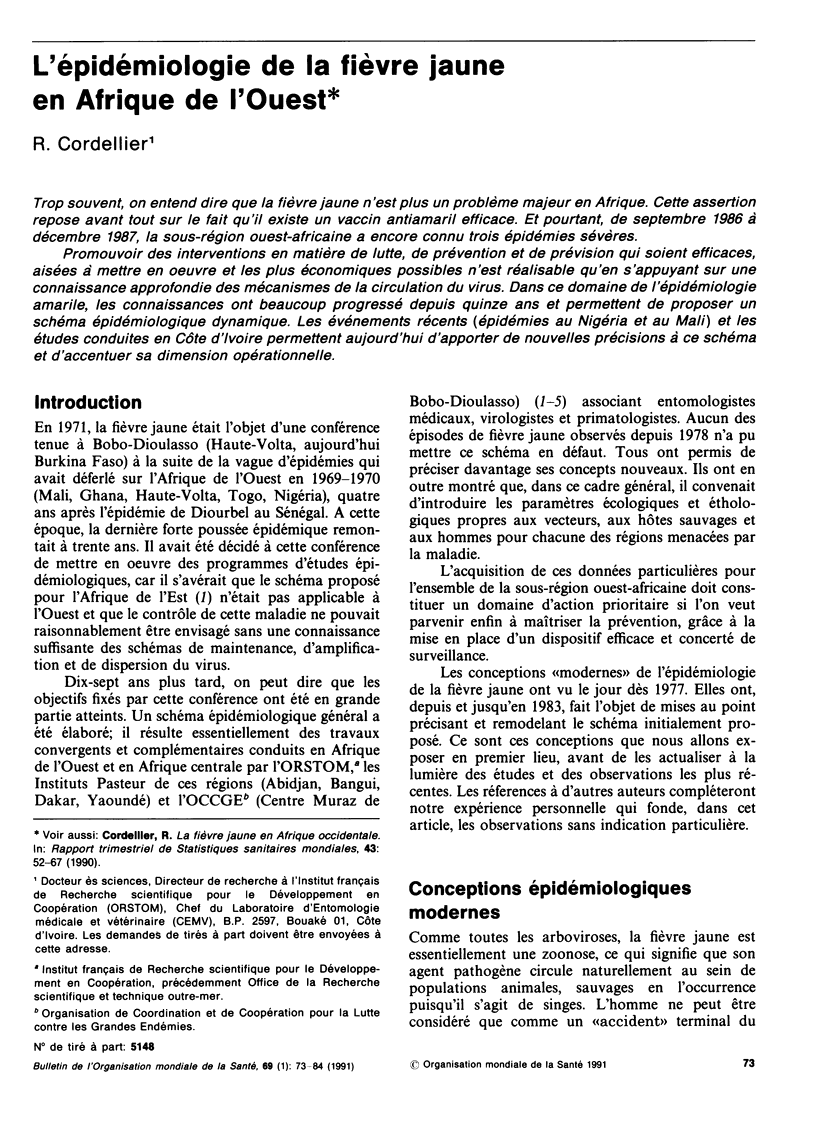
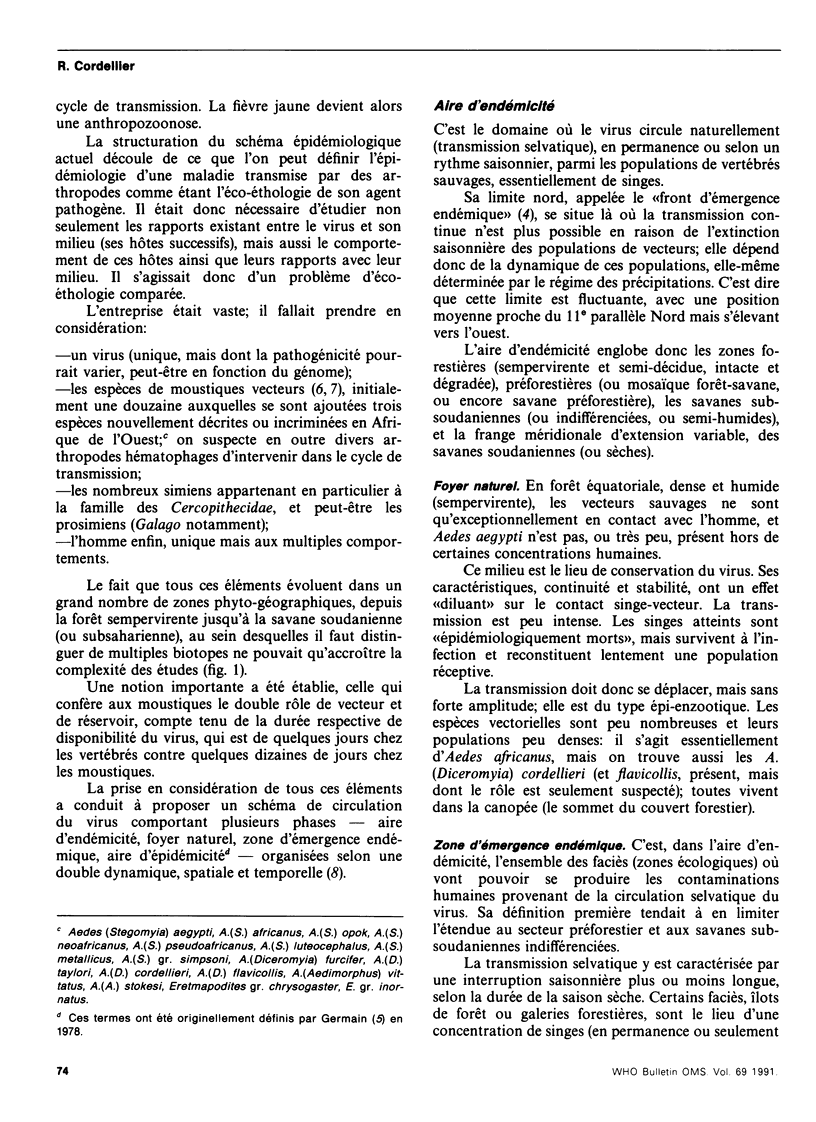
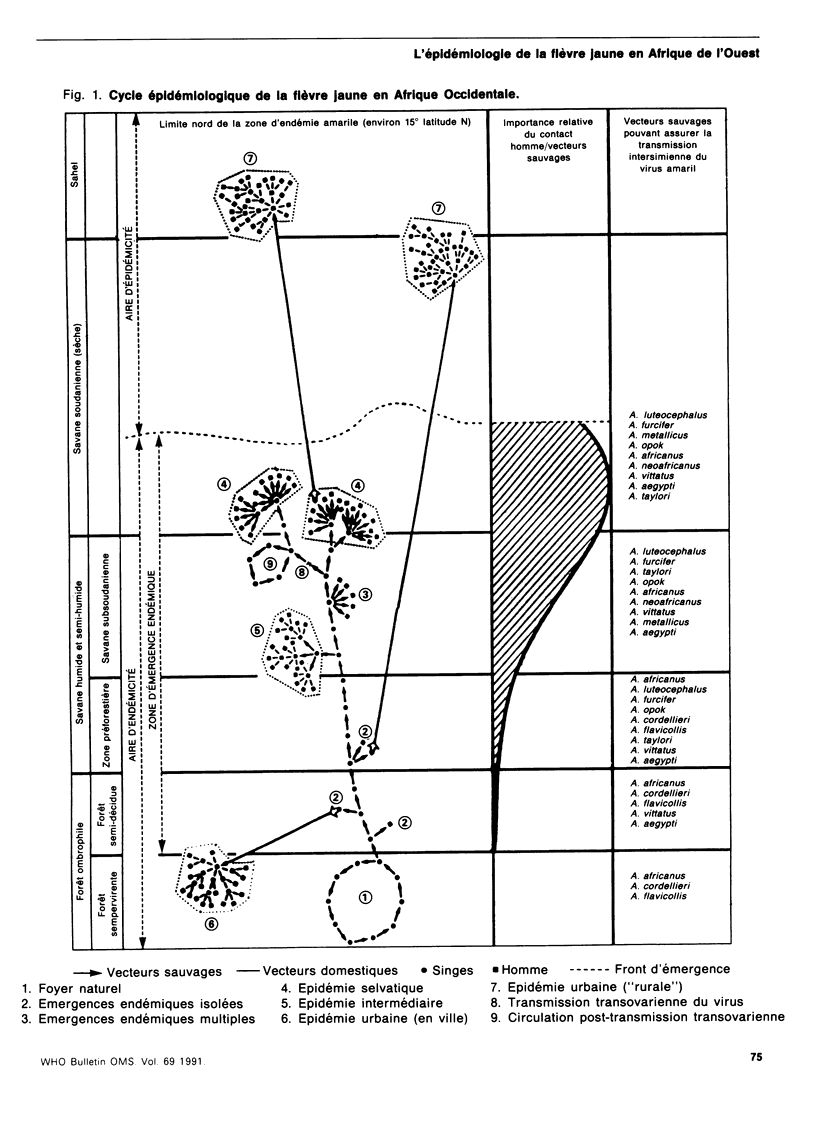
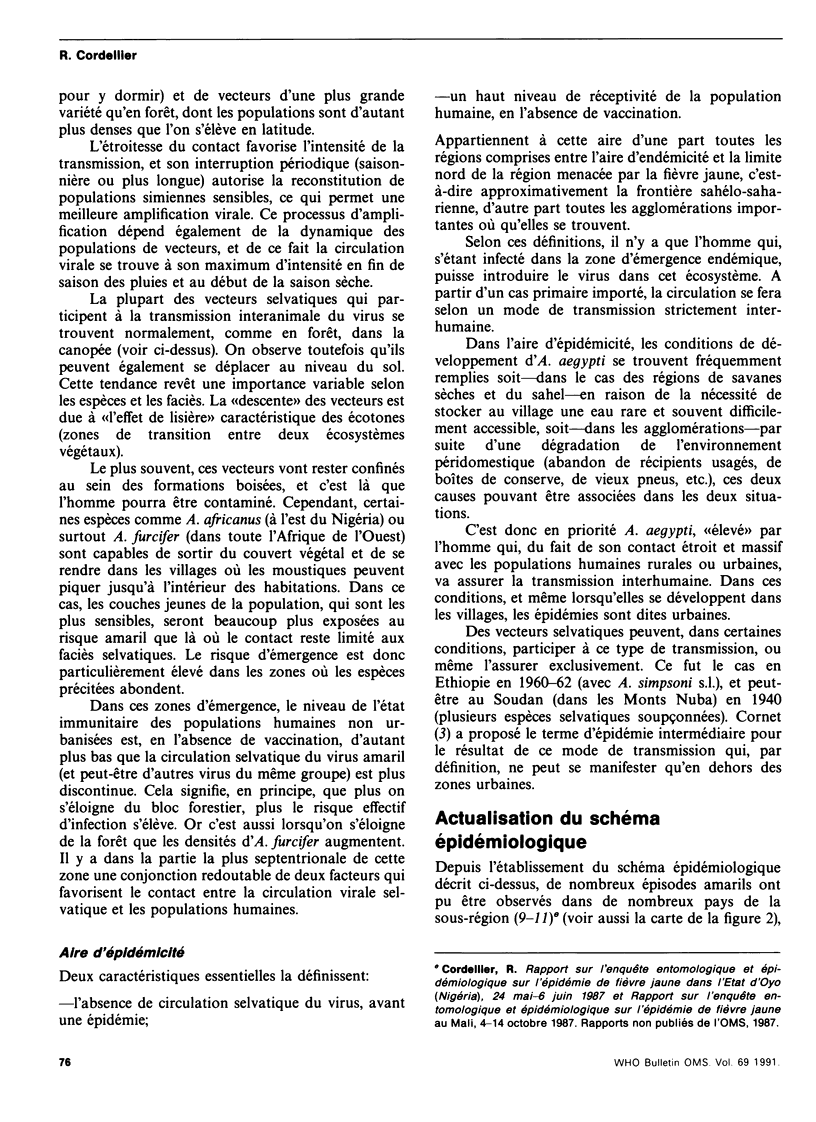
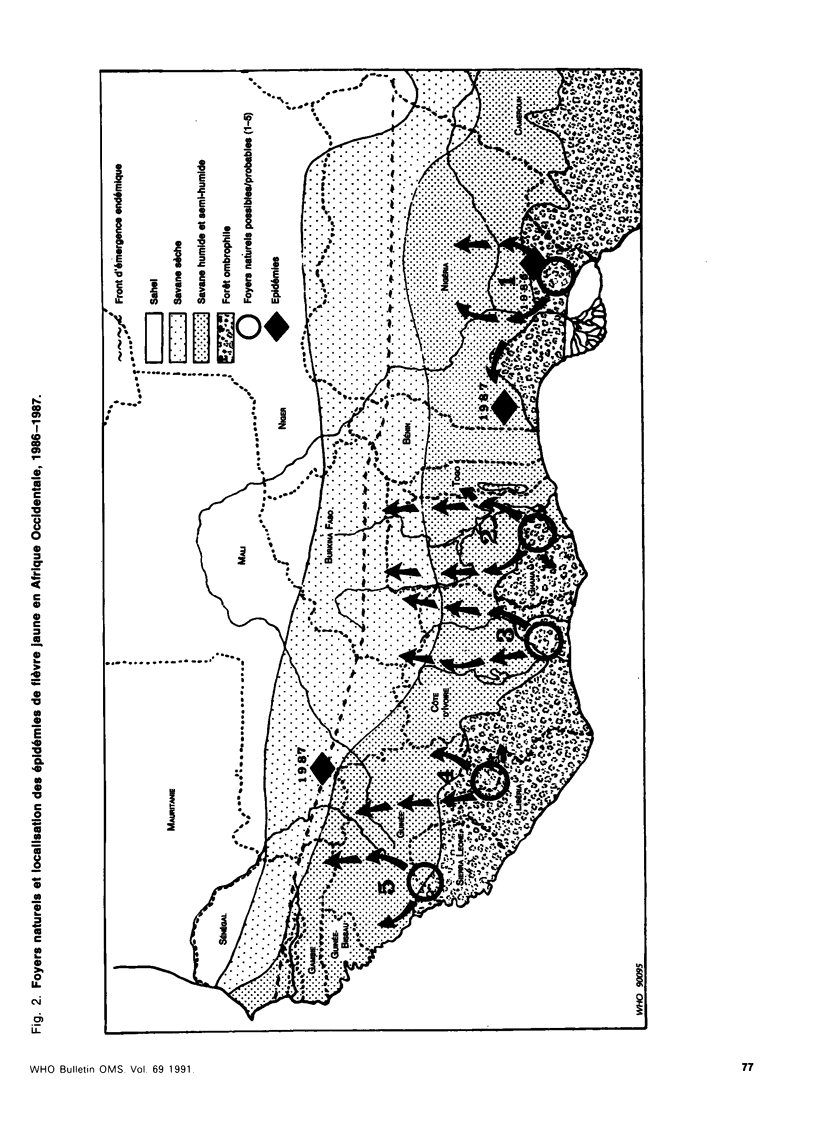
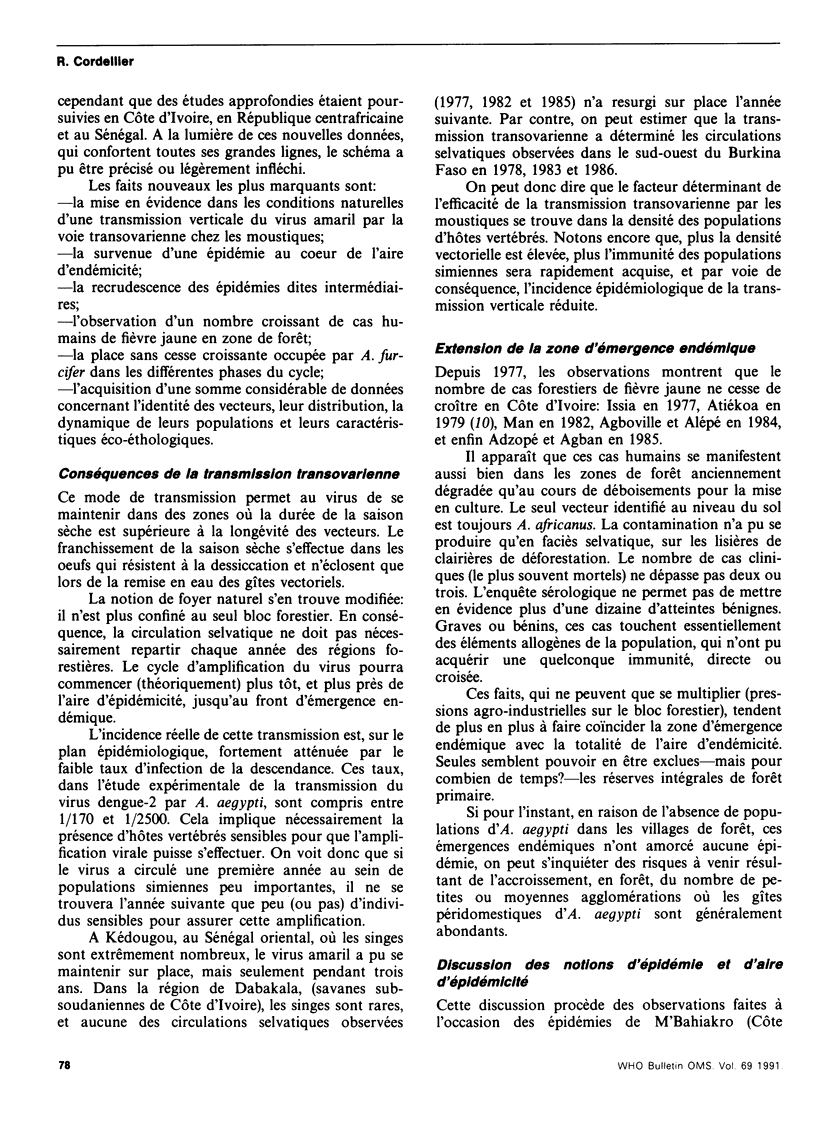
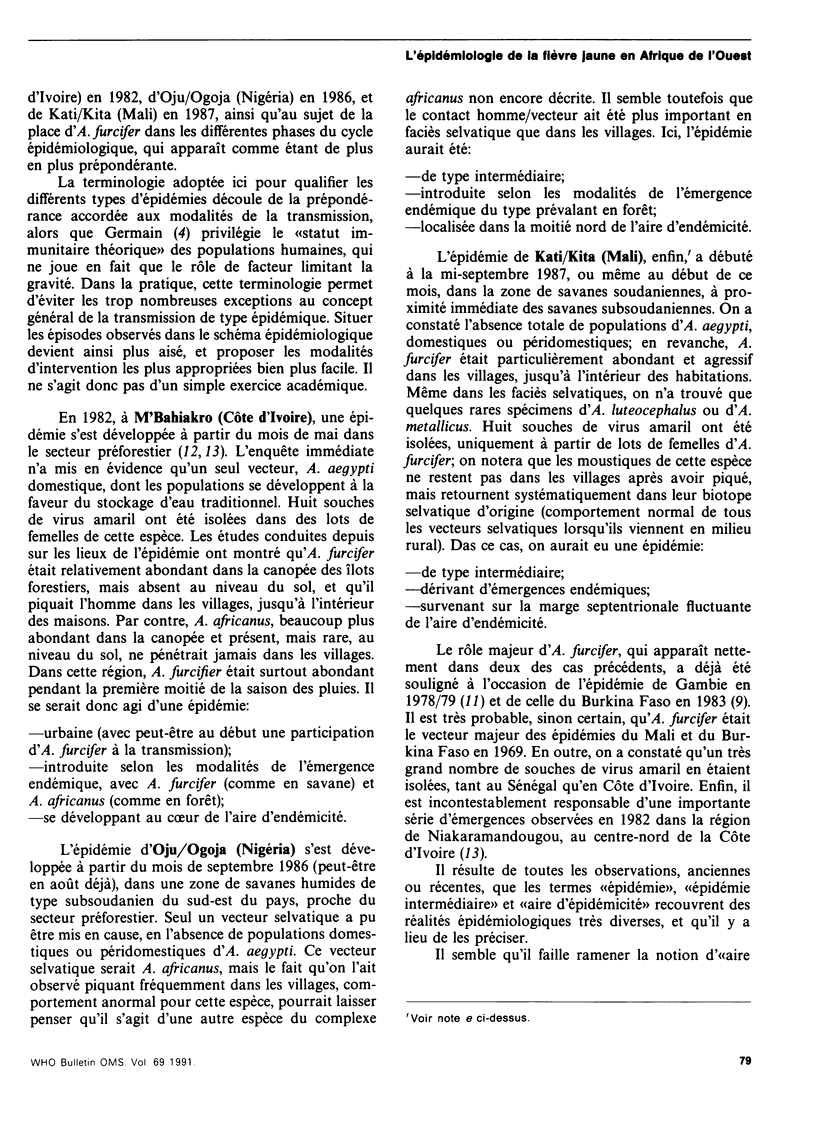
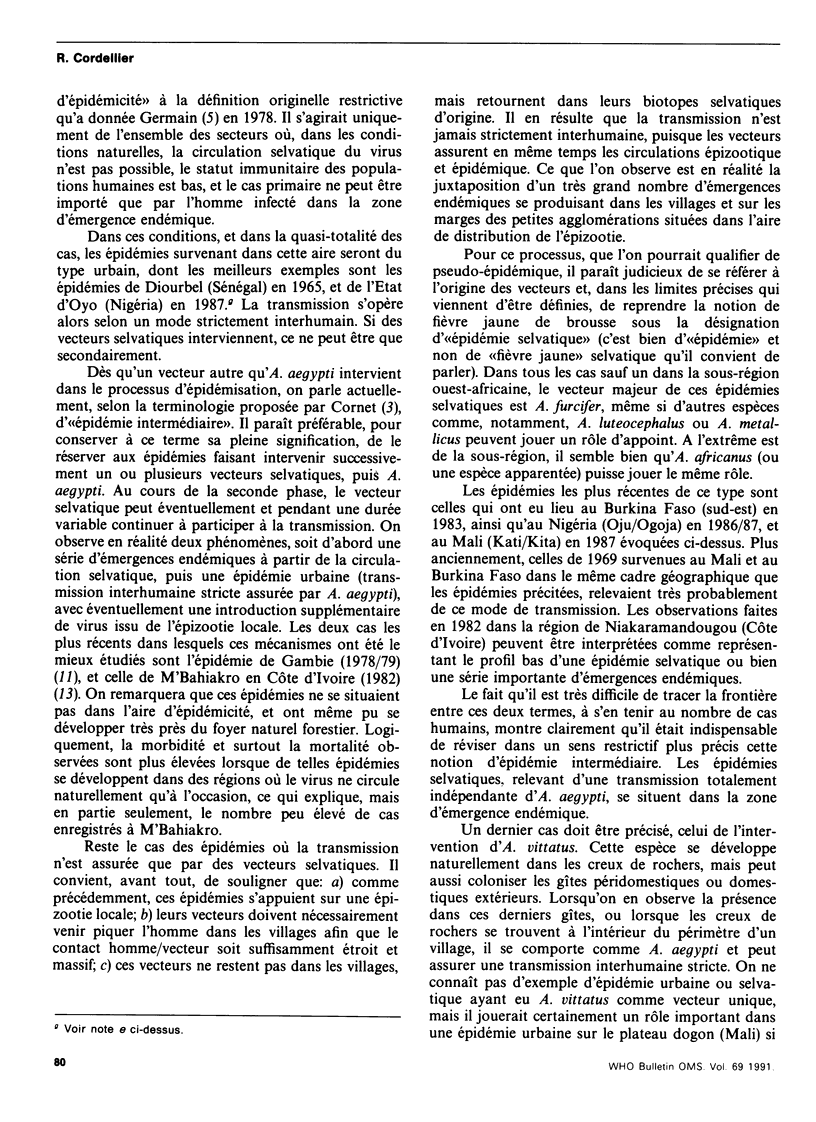
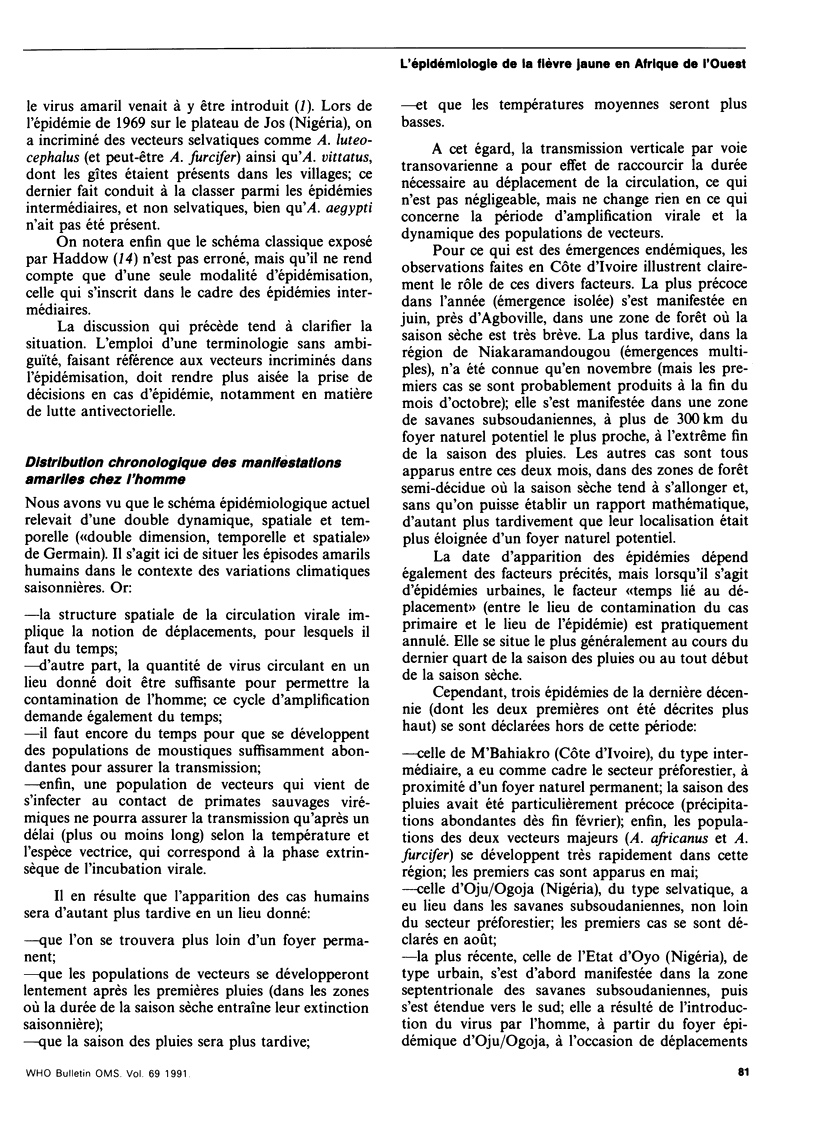
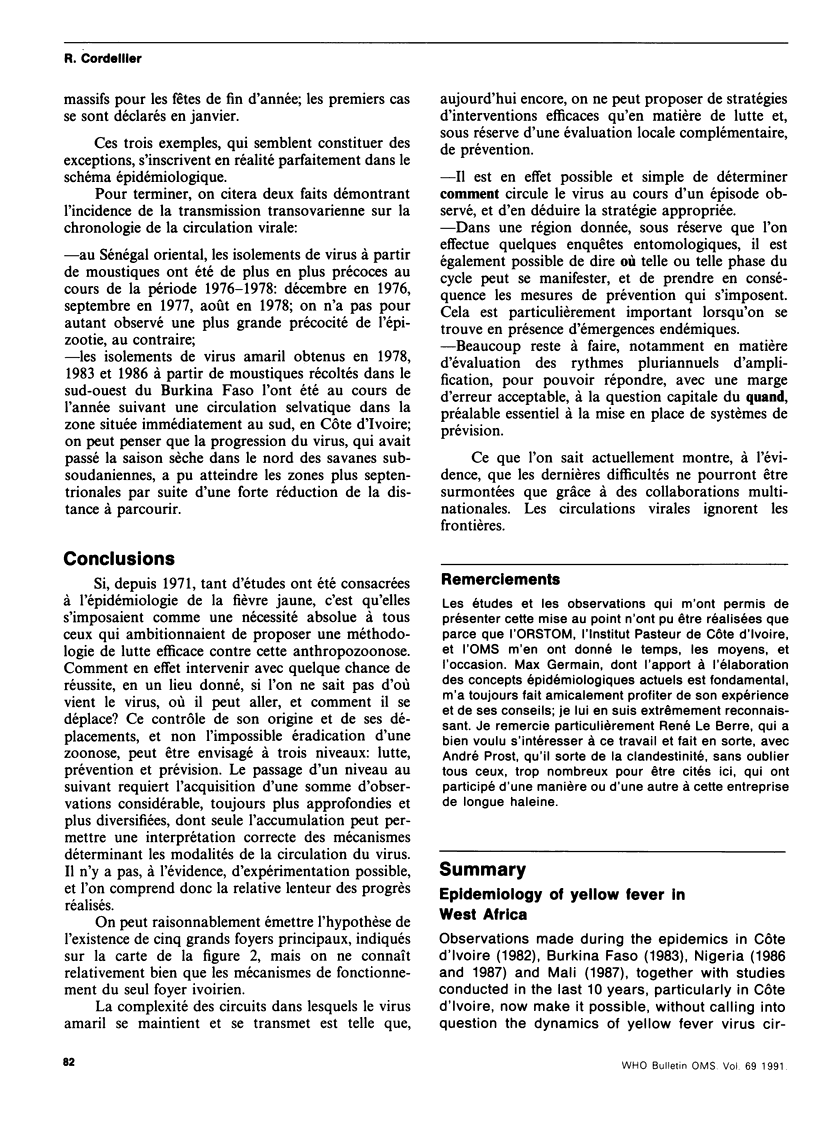
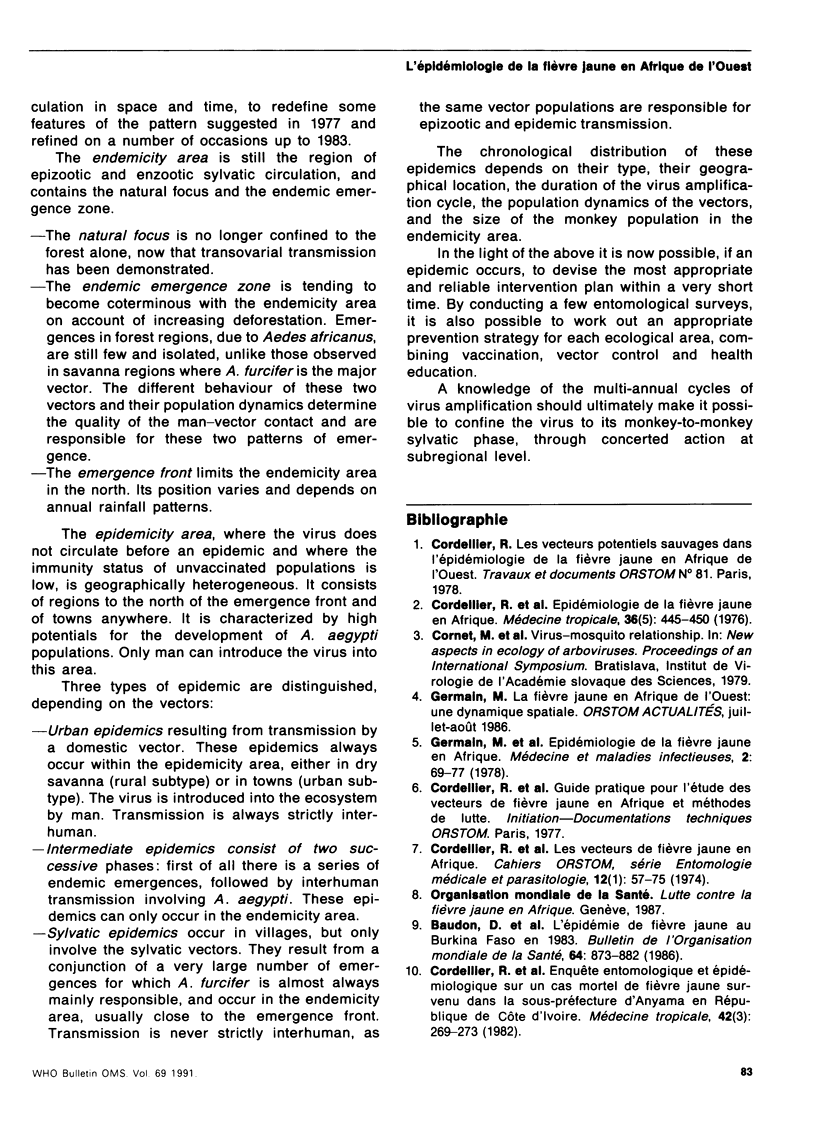

Selected References
These references are in PubMed. This may not be the complete list of references from this article.
- Cordellier R., Bouchite B., Roche J. C., Akoliba P. Enquête entomologique et épidémiologique sur un cas mortel de fièvre jaune survenu dans la sous-préfecture d'Anyama en république de Côte-d'Ivoire. Med Trop (Mars) 1982 May-Jun;42(3):269–273. [PubMed] [Google Scholar]
- Lhuillier M., Sarthou J. L., Cordellier R., Monteny N., Gershy-Damet G. M., Bouchite B. Emergence endémique de la fièvre jaune en Côte d'Ivoire: place de la détection des IgM antiamariles dans la stratégie de surveillance. Bull World Health Organ. 1986;64(3):415–420. [PMC free article] [PubMed] [Google Scholar]


